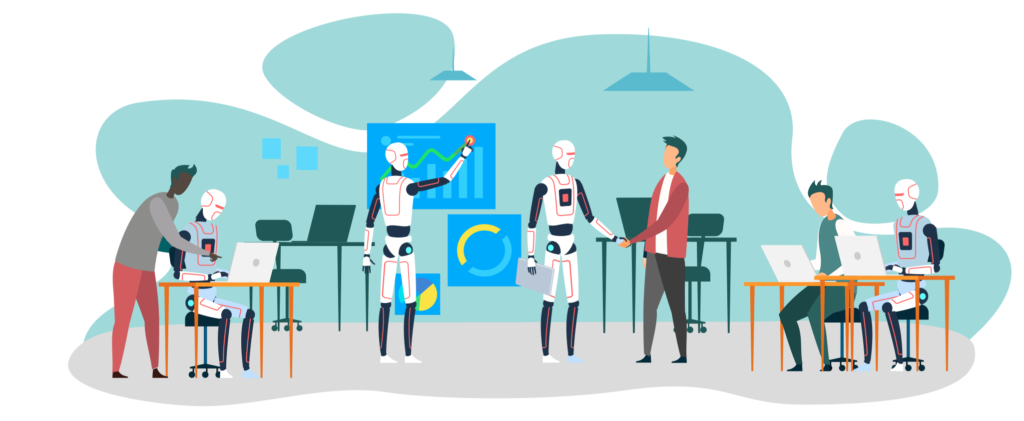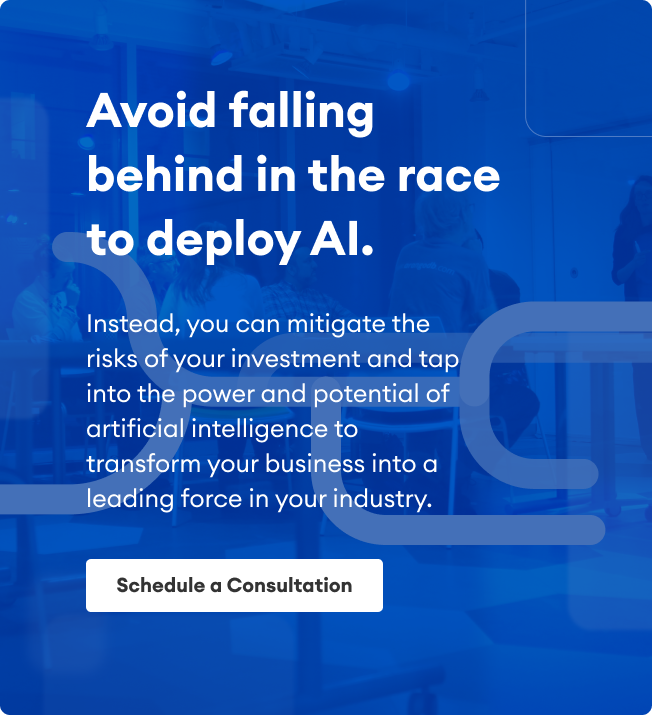The use of artificial intelligence and machine learning in human resource management is on the rise. This is because of the increase in the amount of data available for analysis and the ability to process and analyse this data.

PWC predicts that by 2030 AI will create over $15 trillion in new economic activity, making it the making it the biggest commercial opportunity in today’s fast changing economy. To put that in perspective, that’s bigger than the combined output of India and China. This opportunity is unprecedented.
With 86% of major U.S. corporations predicting that artificial intelligence will become a “mainstream technology” at their company this year, management-by-algorithm is no longer the stuff of science fiction.
What impact does AI have on HR, and how can HR professionals start increasing their capabilities so that they can successfully start implementing AI?
AI and HR the Future of Work
The future of HR is both digital and human as HR leaders focus on creating Superteams of human and automated work. To meet this new priority for HR leaders must develop their fluency in artificial intelligence while they re-imagine how HR will work.
We can start by accepting that change is coming. According to the World Economic Forum, Future of Jobs Report 2020 the adoption of big data remains a high priorities for business leaders, and there is significant interest in non-humanoid robots and artificial intelligence.
Automation, including AI, is going to be doing more work. It was not so long ago that the idea of robots made people think of science fiction By 2025, the time spent on current tasks at work by humans and machines will be equal.
What’s more is that many of us will be in different jobs. 85 million jobs may be displaced by a shift in the division of labour between humans and machines, while 97 million new roles may emerge that are more adapted to the new division of labour between humans, machines and algorithms.
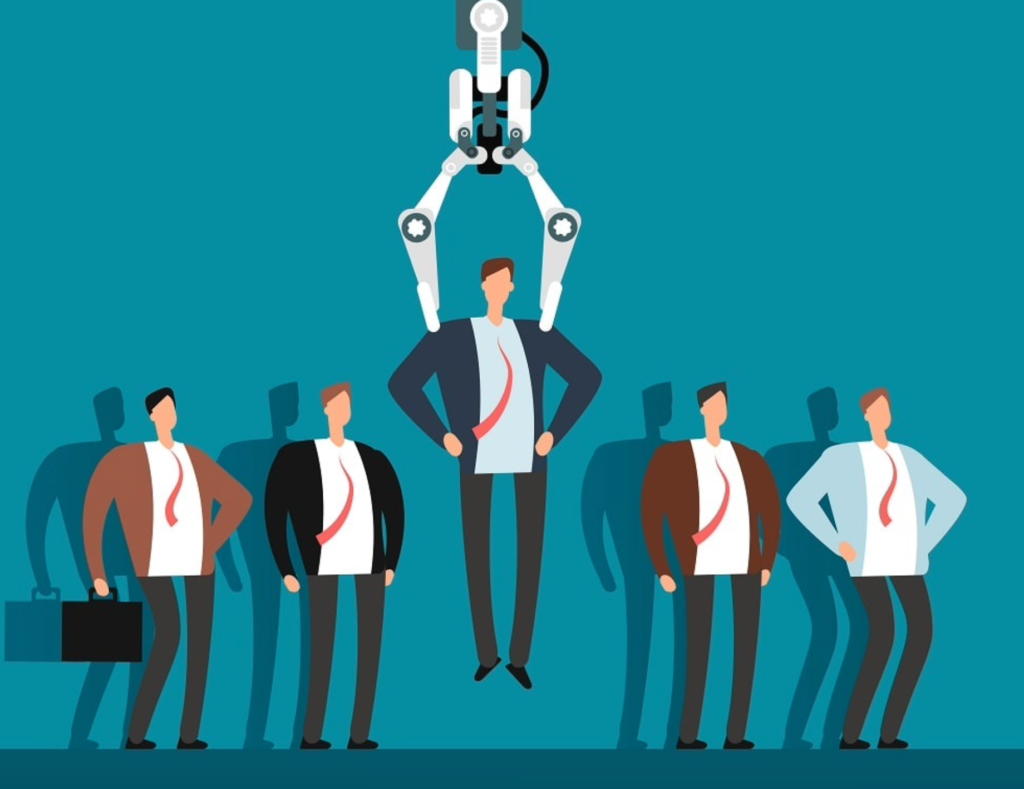
All of this change will impacts Human Resource professionals. Certainly there will be a need for the technical skills associated with AI. That is a problem of finding the right talent.
Beyond that, as AI takes over more transactional aspects of work, HR needs to communicate that the importance of uniquely human skills will grow. To contribute most effectively, people need to be doing what the AI is unable to do, and they’ll need assistance in meeting these new requirements. HR will have to step up to fill that gap. That is why companies like Bank of America and Subaru are paying for more training on soft skills like empathy.
HR will also to think about how people and AI will work together. An AI does not get set up with a full understanding of how to complete a task. In order for it to learn what to do it has to be taught, and the role of teaching is done by a person. Often it is the person currently carrying out the role, which is a tricky situation. If people feel like they are teaching a robot to eliminate their job, they are naturally going to feel resentful, and be suspicious of any change management plans. On the other hand, if the AI will end up being like an assistant who handles repetitive, routine tasks that the person does not like, the AI is much more likely to be welcomed.
Most organizations admit they are confronting a readiness gap when it comes to AI. According to Deloitte, 59% of organizations say the redesign of jobs to integrate AI is important for their success over the next 12 to 18 months. But only 7% say they are ready to address this trend.
Challenges of Artificial Intelligence In Human Resource Management
Before getting too far in applying AI to HR we should be very clear about risks up front.
“When AI is carefully designed and properly used, it has the potential to advance diversity and inclusion in the workplace by mitigating the risks of unlawful discrimination,” said Keith Sonderling, the U.S. Equal Employment Opportunity Commission (EEOC) at the AI World virtual summit.

For example, Sarah Smart, Vice President of Global Recruiting at Hilton says,”By using artificial intelligence to source, screen and interview candidates, we have increased our speed to hire by 85%. We have also experienced other business benefits; such as increasing the diversity of our talent pool and enabling our recruiters to identify a high performing candidate faster.”
However, Sonderling notes that AI can also amplify workplace bias if it is poorly designed or carelessly deployed. Using AI to make decisions ordinarily made by HR professionals, he added, can have significant legal ramifications, so employers should exercise caution in deciding when and if to hand such matters over to algorithms.
Even productivity conscious companies like Walmart find that sometimes it just makes the most sense to use people instead of robots.
Organizations should be looking at new technologies like AI and trying to determine how they can successfully increase the capabilities of their team members. At the same time, it is wise to look with a skeptical eye at the recommendations from vendors. What works in one organizational context may not work in another, due to differences in the data, or the IT requirements, or any number of other reasons.
Examples of AI In HR
The list of examples of AI being used for Human Resources purposes is growing all the time.
At UPS, AI monitors and reports on driver safety and productivity, tracking drivers’ every movement from the time they buckle their seat belts to the frequency with which they put their trucks in reverse. At IBM, AI identifies employee trends and makes recommendations that help managers make decisions on hiring, salary raises, professional development and employee retention. Even NFL teams are using AI to assess player skills and make injury risk assessments during the recruiting process.
The Mercer Global Talent Trends 2020-21 tracks where organizations are using AI in HR, and where they are investing.
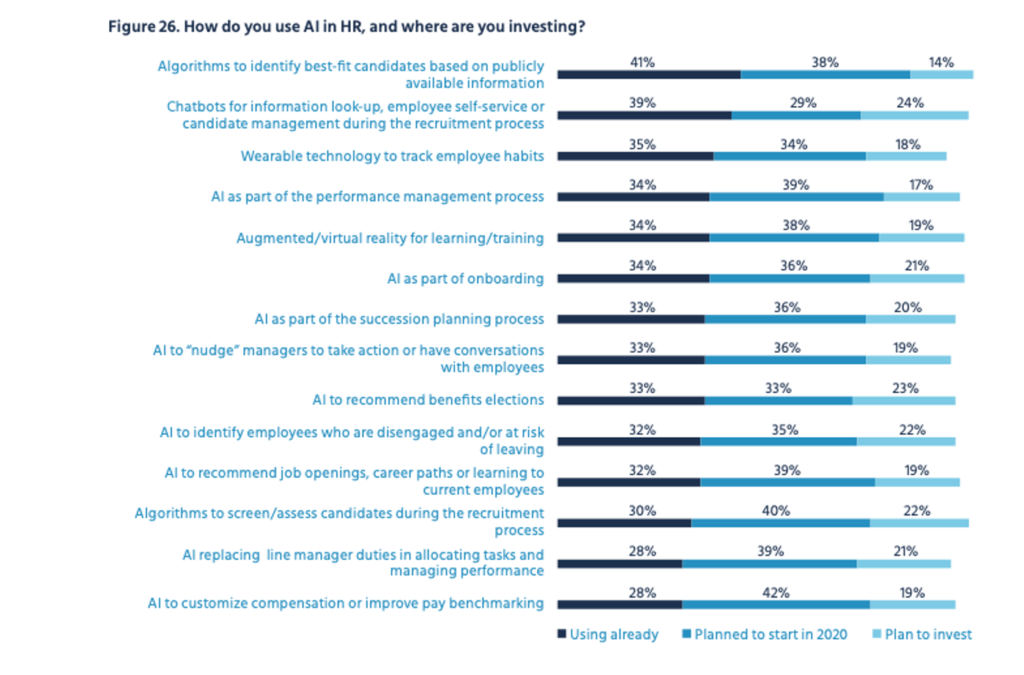
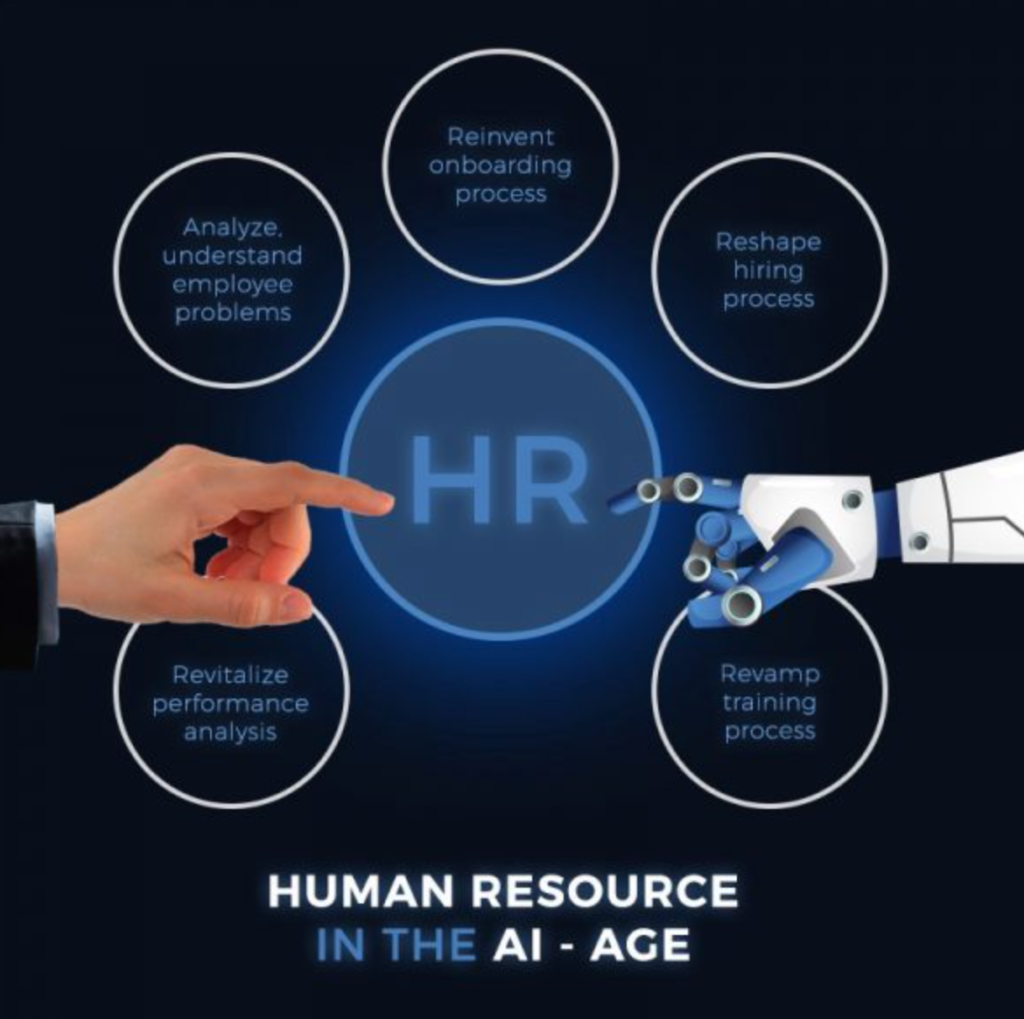
Bottom line, there are near endless opportunities for HR to leverage AI to increase its productivity and increase clients service. In other blogs we drill down on these individual use cases.
What may be surprising to HR teams is the degree to which employees can be receptive to AI. Following a groundbreaking survey by Oracle of over 8000 people in 10 countries, we learn that the introduction of AI is shaking up manager and employee expectations and dynamics.
- 53% are optimistic and excited about having robot coworkers.
- 64% of people would trust a robot more than their manager and half have turned to a robot instead of their manager for advice.
- 36% think robots are better than managers at providing unbiased information
As a rule, when it comes to applying AI in the workforce we are optimists, with a healthy dose of scepticism. We don’t mind saying that these results from Oracle surprised us. Our experience leads us to believe that the adoption of AI is likely to be complicated, even if employees are keen. It is good that they are open to have AI as team members, but HR leaders should not assume that the path is always easy.
Perhaps over time we will come to fully agree with Emily He, the Senior Vice President, HCM Marketing at Oracle when she says “People are no longer afraid of the robots. They have experienced how AI and machine learning can improve the way they work in a very pragmatic way. And the more they use these technologies, the more excited they are about them.”

Join the Conversation – Next Steps
What should HR professionals be doing if they want to start making progress on AI and have AI-ready workforce? There are at least 3 things that can be done.
First, build a cross functional team. This is not something you can do on your own. Communicating that you you want to hear about the pain points and bring in their expertise will build trust. You’ll need people from business units, and IT at a minimum. If you or the IT teams does not have expertise on AI, you can do some of this research on your own, or get outside help. Be careful that if you ask a vendor if they can solve a problem the answer is almost certainly yes, which is why vendor-agnostic advice is so important.
Second, identify business problems where AI can potentially help. Our blog on 7 Essential Questions to Ask Before Starting an AI Project is a great place to start. While virtual recruitment, onboarding or performance measurement might make sense in some organizations, it might not for yours.
Finally, undertake some simple due diligence and avoid what we call the “light bulb mistake.” Far too many projects get started after a client sees a pitch about what a final result could look like. What the clients overlook is that for that solution to be viable the organization has to have the necessary data and IT infrastructure. Failing to consider these requirements is like buying a light bulb without checking if you have an outlet to plug it into, or electricity. The lightbulb really does work for other clients, but that doesn’t mean it will work for you.
Taking these 3 simple steps greatly increases your odds of beginning down the path to successful implementation and integration of artificial intelligence in the workplace.
If you would like to have a free 30 Minute Breakthrough conversation about how AI could help you, please book here.
